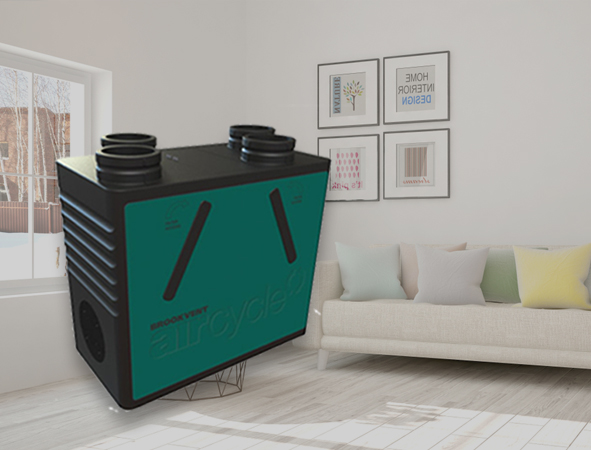In the current era, where sustainable energy solutions are paramount, solar battery banks are gaining popularity as a reliable method for energy storage. These systems store energy produced by solar panels, ensuring a steady power supply even when sunlight is not available. Solar Battery Bank provides the flexibility to harness solar energy during the day and use it whenever needed, enhancing energy independence and security. They consist of essential components such as solar panels, batteries, charge controllers, and inverters. Together, these elements form an effective system for capturing and storing solar energy.
Types of Solar Battery Banks Available
The most common types of batteries used in solar battery banks are lead-acid and lithium-ion batteries. Lead-acid batteries, including both flooded and sealed varieties, are known for their affordability and have been a staple in energy storage for decades. However, they require regular maintenance and have a shorter lifespan.
Lithium-ion batteries, although more expensive, offer higher efficiency, longer lifespan, and lower maintenance needs, making them a popular choice for modern installations. Other less common options include nickel-cadmium batteries, which are highly durable but have environmental concerns, and flow batteries, which are scalable and ideal for large-scale applications but come with higher initial costs.
Key Benefits of Using Solar Battery Banks
Solar battery banks offer numerous advantages for homeowners and businesses alike. One of the primary benefits is the ability to store excess solar energy generated during the day for use at night or during power outages. This capability ensures a continuous power supply and reduces dependence on the national grid. Over time, this can result in significant savings on energy bills, particularly in regions with high electricity costs.
Moreover, solar battery banks contribute to a reduction in carbon footprint by utilising clean, renewable energy sources instead of relying on fossil fuels. They also offer enhanced energy security, providing a reliable backup during emergencies or natural disasters. With advancements in battery technology, modern solar battery banks are becoming increasingly efficient, with longer lifespans and lower maintenance requirements, making them a practical and sustainable choice for energy storage.
Factors to Consider When Choosing a Solar Battery Bank
When selecting a solar battery bank, it’s crucial to consider both capacity and power ratings. Capacity refers to the total energy storage, while power rating indicates how much energy can be delivered at once. Efficiency and lifespan are also pivotal; a higher efficiency battery will minimise energy loss, and a longer lifespan means fewer replacements.
Additionally, assess the battery’s depth of discharge (DoD), which determines how much of the battery’s capacity can be used without compromising its lifespan. Safety features are another vital aspect, especially for installations in residential settings. Finally, consider the battery’s compatibility with your existing solar setup, including inverters and charge controllers.
Installation Process of Solar Battery Banks
To begin the installation process, gather all required equipment: solar panels, batteries, a charge controller, an inverter, and appropriate wiring. Start by mounting the solar panels in a location with maximum sun exposure. Next, the solar panels are connected to the charge controller to regulate voltage and current. Once the charge controller is in place, link it to the batteries to ensure they are charged safely.
Following this, the batteries are connected to the inverter, converting converts the stored DC power into AC power suitable for household appliances. Ensure all wiring is secure and properly insulated throughout the installation to prevent electrical issues. After all components are connected, perform a thorough inspection to confirm that the system is operating correctly. This includes checking the functionality of each element and ensuring that the entire setup is free from any wiring faults or connection errors. Proper installation is crucial for the efficiency and longevity of your solar battery bank system.
Maintenance Tips for Optimal Performance
Here are 5 essential maintenance tips for optimal performance of any system—whether it’s a battery, appliance, HVAC unit, or vehicle:
1. Follow Manufacturer Guidelines
Always refer to the user manual for maintenance schedules, usage limits, and care instructions. Adhering to the manufacturer’s recommendations helps maintain efficiency and avoid voiding warranties.
2. Keep It Clean
Dust, dirt, and grime can hinder performance. Regular cleaning of filters, vents, fans, or connectors improves airflow, cooling, and overall system efficiency—especially in electronics, engines, and HVAC units.
3. Inspect and Monitor Regularly
Check for wear and tear, corrosion, loose connections, and unusual noises or smells. Routine inspections help detect small issues early before they become costly problems.
4. Stay Updated with Software or Firmware
For devices and smart systems, keeping software or firmware up to date ensures access to the latest features, security patches, and performance improvements.
5. Schedule Preventive Maintenance
Don’t wait for problems to arise. Regular service by a qualified technician—whether it’s for a car, air conditioner, or backup power system—prolongs lifespan and optimizes performance.
Understanding How Solar Battery Package Work
The basic working principle of a Solar Battery Package involves the seamless conversion of sunlight into usable electricity. Solar panels, installed in an optimal location, absorb sunlight and convert it into direct current (DC) electricity. This DC electricity is then regulated by a charge controller, which ensures the batteries are charged correctly and prevents overcharging.
The energy stored in the batteries can be accessed at any time to power your home or other applications. An inverter plays a crucial role in converting the stored DC electricity into alternating current (AC) power, which is compatible with standard household appliances. Together, these components create an efficient system for harnessing, storing, and using solar energy.
Financial Considerations: Costs and Incentives
The initial cost of a solar battery bank can be a significant consideration, but various financial incentives can make it more accessible. Installation expenses depend on factors like system size, battery type, and the complexity of the setup. However, many regions offer government grants, tax credits, and rebates to promote renewable energy adoption. These incentives can significantly offset the upfront costs, making solar battery banks a more viable option for homeowners and businesses.
Additionally, financing options such as loans or leasing programmes can spread out the initial expenditure, reducing the financial burden. The long-term economic benefits also play a crucial role. By storing excess solar energy, you can reduce your reliance on the national grid, lowering electricity bills. This is particularly advantageous in areas with high electricity prices or where time-of-use rates apply.
Energy savings over time can often recoup the initial investment, and as technology improves, the cost of solar battery systems is expected to decrease. Given these financial incentives and potential savings, investing in a solar battery bank can be an economically sound decision to contribute to your financial well-being and the environment.
Environmental Impact of Solar Battery Banks
By integrating solar battery banks into your energy system, you are actively participating in reducing greenhouse gas emissions. Solar energy is a clean, renewable source that generates power without releasing harmful pollutants into the atmosphere. Unlike conventional fossil fuels, solar power does not produce carbon dioxide or other greenhouse gases, significantly diminishing your carbon footprint.
Additionally, solar battery banks help decrease the need for non-renewable energy sources by storing excess solar power for later use, reducing the overall national grid demand. This storage capability also alleviates the pressure on power plants, reducing emissions from these traditional sources.
Moreover, advancements in battery technology are making solar battery banks more efficient and environmentally friendly, with improvements in recycling processes for battery materials further lessening their environmental impact. Solar battery banks also conserve natural resources, as less coal, oil, and natural gas are needed for electricity production. As a result, the use of solar battery banks aligns with global efforts to promote sustainable energy practices and protect the environment for future generations.
Common Misconceptions About Solar Battery Banks
Several myths persist about solar battery banks that often discourage potential users. One prevalent belief is that these systems require overly complex maintenance, but regular checks and proper guidance make them manageable. Another misconception is that solar battery banks are unreliable, particularly during overcast or winter months. However, with a well-designed system, energy stored during sunnier periods can be utilised effectively even when sunlight is minimal.
Additionally, the technology is still too new to be dependable. Yet, battery efficiency and longevity advancements have made modern solar battery banks a robust option for residential and commercial use. Furthermore, there is a mistaken idea that solar battery banks take up much space. Contemporary designs are increasingly compact and can be tailored to fit various spatial constraints, making them suitable for multiple settings.
Future Trends and Innovations in Solar Battery Banks
Emerging technologies promise to transform solar battery banks significantly. Solid-state batteries, for instance, offer higher energy densities and enhanced safety compared to traditional lithium-ion batteries. Additionally, battery chemistry and materials advancements are leading to longer lifespans and faster charging times. Energy management systems are becoming more sophisticated, allowing for better integration with smart home technologies and grid-tied systems.
These innovations will enable users to optimise energy use more efficiently, reducing waste and improving overall system performance. Another exciting development is the advent of scalable and modular battery systems, which can be easily expanded as energy needs grow. Recycling and sustainable material sourcing innovations also make solar battery banks more environmentally friendly. As these technologies evolve, they will drive down costs and increase accessibility, making renewable energy storage a more attractive option for a wider audience.
Conclusion
Embracing solar battery banks as part of your energy system presents a forward-thinking approach to sustainability and energy management. By investing in this technology, you not only gain the ability to store and utilise solar energy efficiently but also contribute to a greener planet by reducing reliance on non-renewable resources. The various types of batteries available, from lead-acid to lithium-ion, offer flexibility in tailoring a system that best suits your energy needs and budget. Addressing common misconceptions can also provide clarity, making it easier to appreciate the reliability and manageability of these systems. As advancements continue to drive the industry forward, solar battery banks are set to become an integral component of sustainable living, offering a reliable, efficient, and environmentally friendly energy storage solution.
FAQS
1. What is a solar battery bank used for?
A solar battery bank stores the energy generated by solar panels, allowing you to use it when sunlight is not available.
2. How do I determine the correct type of battery for my solar bank?
Factors such as capacity, power ratings, efficiency, lifespan, depth of discharge (DoD), and budget are crucial in selecting the correct battery type.
3. Are solar battery banks beneficial for the environment?
They significantly lower carbon emissions and reduce reliance on fossil fuels, contributing to a cleaner environment.
4. What are the installation costs for a solar battery bank?
Installation costs can vary based on the system size, battery type, and setup complexity. However, financial incentives like grants, tax credits, and rebates can significantly reduce the initial expenses.
5. How often should solar battery banks be maintained?
Regular visual inspections should be conducted monthly, and more thorough maintenance, including checking connections and battery health, should be performed annually to ensure optimal performance.







